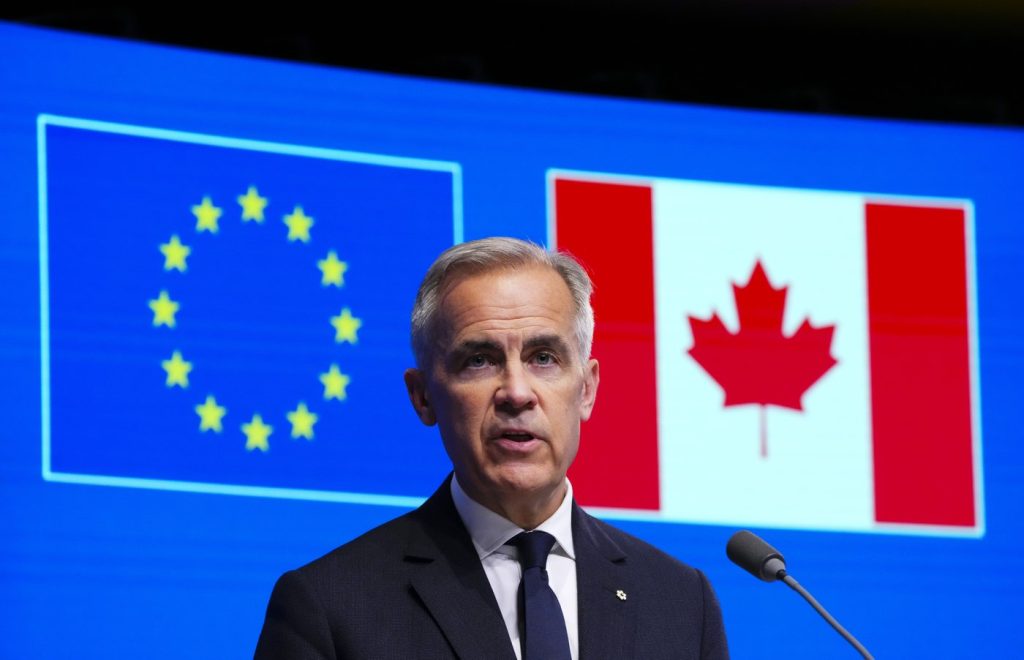Canada will meet the new, more ambitious NATO spending target by investing in critical minerals and the infrastructure required to bring them to market, Prime Minister Mark Carney said ahead of the NATO leaders’ summit in the Netherlands. Speaking to CNN’s Christiane Amanpour in a pre-summit interview, Carney said that the alliance is poised to raise its military spending benchmark from the current 2% of GDP to 3.5%, with an additional 1.5% dedicated to defence-adjacent sectors like infrastructure, cybersecurity, and industrial support — for a total of 5%.
Carney confirmed that Canada is prepared to meet this new goal in part by developing its vast critical mineral resources, with a significant portion of that investment qualifying under NATO’s broader definition of defence-related spending. This includes infrastructure such as ports and railways that support extraction and transport. The initiative will involve partnerships with the European Union, the United Kingdom, and other allies.
These critical minerals — including lithium, nickel, cobalt, and graphite — are essential not only to consumer technologies but also to high-end military hardware. NATO has identified 12 such minerals, including aluminum for missiles and aircraft, graphite for tank production, and cobalt for submarines and jet engines. Canada holds some of the largest global reserves of these resources.
Foreign Affairs Minister Anita Anand, also in The Hague, emphasized Canada’s commitment to increased defence spending while cautioning about the timeline. She noted that although some countries are pushing for a 2029 deadline, Canada wants room to reassess progress periodically. She warned against locking in rigid timelines without considering national spending capacity and called for flexibility as members move toward the five per cent benchmark.
Currently, Canada spends roughly $41 billion on defence, or 1.37% of its GDP — far below the proposed target. A five per cent contribution would represent about $150 billion annually, a figure Canada hasn’t approached since the 1950s. Nevertheless, Carney has said Canada could reach the two per cent mark this year — years ahead of the previously projected 2032 — especially with the help of a new Canada-EU defence and security pact, signed Monday in Brussels.
Meanwhile, consensus on the five per cent goal is building across the alliance. The U.S., U.K., Germany, France, and several frontline NATO states have signaled support. However, Spain has secured an exemption, and Slovakia’s Prime Minister Robert Fico has called the plan “absurd,” suggesting it could consume nearly a fifth of his country’s annual budget. He also floated the idea of a neutral stance for Slovakia, further complicating unity.
NATO Secretary-General Mark Rutte and U.S. Defence Secretary Pete Hegseth both expressed confidence the target will be adopted during the summit. Rutte reportedly texted former U.S. President Donald Trump to credit him for influencing NATO allies’ commitment, though Trump said the new target should not apply to the United States.
The summit, unfolding in The Hague, takes place amid heightened geopolitical tension, with Russia’s ongoing war in Ukraine, rising Arctic security concerns, and trade tensions across the Atlantic. Carney’s meetings with leaders from Latvia, the Netherlands, and the Nordic nations focused on these issues, as well as Canada’s expanding role in European and transatlantic defence.
As discussions continue, Canada’s plan to use economic development — particularly in critical minerals — to meet military objectives may provide a roadmap for countries seeking to reconcile defence obligations with national economic priorities.

